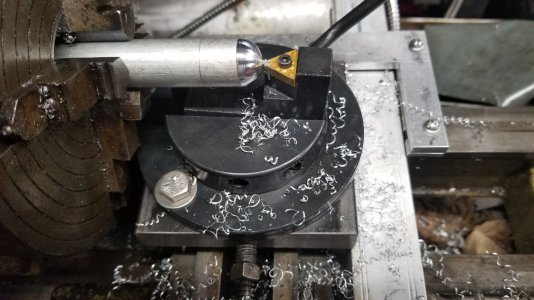I just built a mount for my cheap, eBay radius tool today. I'm using it on an old Atlas lathe. This is a picture of my first attempt with the tool. It came out OK, but I was off by about .005 in the X axis. What I did was... I used a center in the tailstock to zero the cutter (by eye), then I pushed it up against the face of the material and zeroed the DRO. Then I loosened the cutter, swung it around to the Y axis, moved the X over the same distance as the radius, and pushed the cutter in to where it touched the side of the stock and tightened it back down. I figured this should have been my endpoint. Then I backed the cutter out in the y axis, fired up the lathe and started cutting. When I made my last pass, the Y axis was just right, but I was missing about .005 on the tip from the X axis. I moved it over and cleaned it up and it worked, but I don't consider .005 to be precision. Is there a better way to do what I was trying to do? Do I just need more practice?




